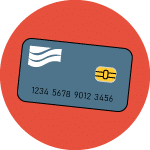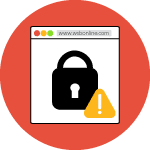Identity Theft
Don’t be a victim of identity theft

In the fight against identity theft, awareness is our main defense.
Common methods

Dumpster Diving

Stealing

Skimming

Hacking

Phishing
Stay alert
Watch for signs of possible identity theft, such as:
- Bills that do not arrive as expected
- Unexpected credit card or account statements
- Denials of credit for no apparent reason
- Calls or letters about purchases you did not make
- Charges on your financial statements that you don’t recognize
Prevention is key
To reduce chances of identity theft, practice preventative measures, such as:
- Shred important documents that include any sensitive information, such as bank account number on a monthly statement.
- When disposing of debit and credit cards, make sure to cut through the numbers and magnetic strips. Thieves will go to great lengths to piece them back together.
- Routinely monitor your debit and credit card transactions to identify and report suspicious activity in a timely manner.
- Make sure your password is strong and secure, including a mix of lower and upper-case letters, numbers, and symbols. Do not include easily identifiable information, such as your mother’s maiden name or the last four digits of your SSN.
- Enable two-factor authentication on as many accounts as possible.
- Regularly monitor your credit report and report any inquiries you do not recognize immediately.
- Always pay close attention to grammar and spelling mistakes in e-mails.
- If you must mail sensitive documents such as a check or tax information, deposit outgoing mail into a secure blue box.
- Never provide your personal information in response to an unsolicited e-mail, fax, letter, or internet advertisement.
- When using e-mail for account inquiries to WaterStone Bank, always send your message through secure Digital Banking.
- When WaterStone Bank requests information, you have the option to submit the required information by mail or in person. You are never required to give personal information over the phone or through e-mail.
Additional Resources
Equip yourself with the latest insights, trends, and precautions against various scams with these resources:
Latest Insight & Education
Stay informed and empowered with our collection of articles and tools. Whether you’re looking to improve your financial knowledge or explore tips for better banking, our resources are here to guide you every step of the way.
Remember that WaterStone Bank will not call you directly and ask for your personal information.
If you are sending loan related payments or wire transfers, remember that WaterStone bank will not email you wire instructions containing your personal account information such as routing and or account numbers. To avoid falling victim to scamming, be sure to confirm all your information before approving and sending wire and ACH transfers.
If you have any questions or believe you may have fell victim to a scam, please call our Customer Support Center or your local branch immediately.
